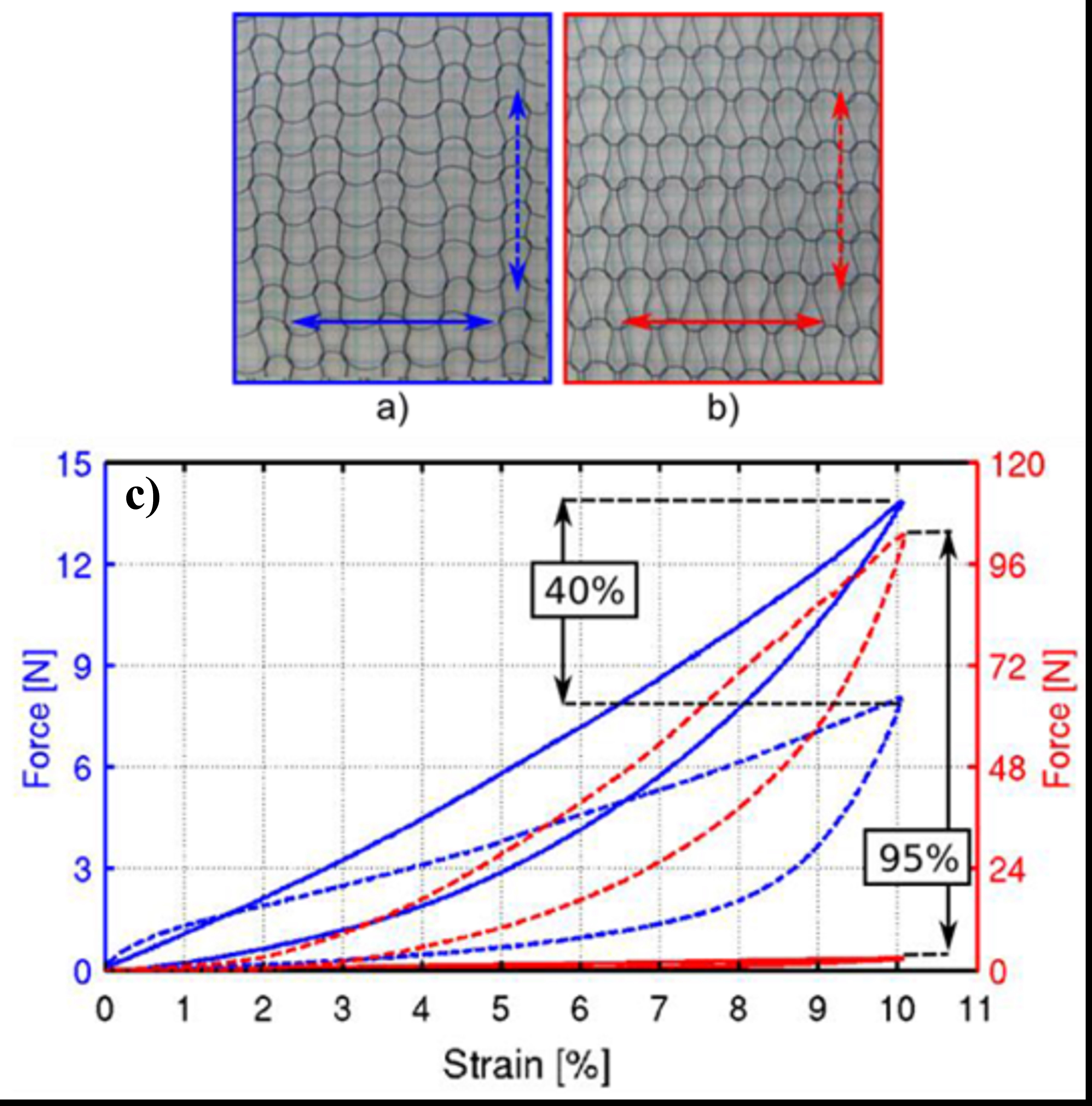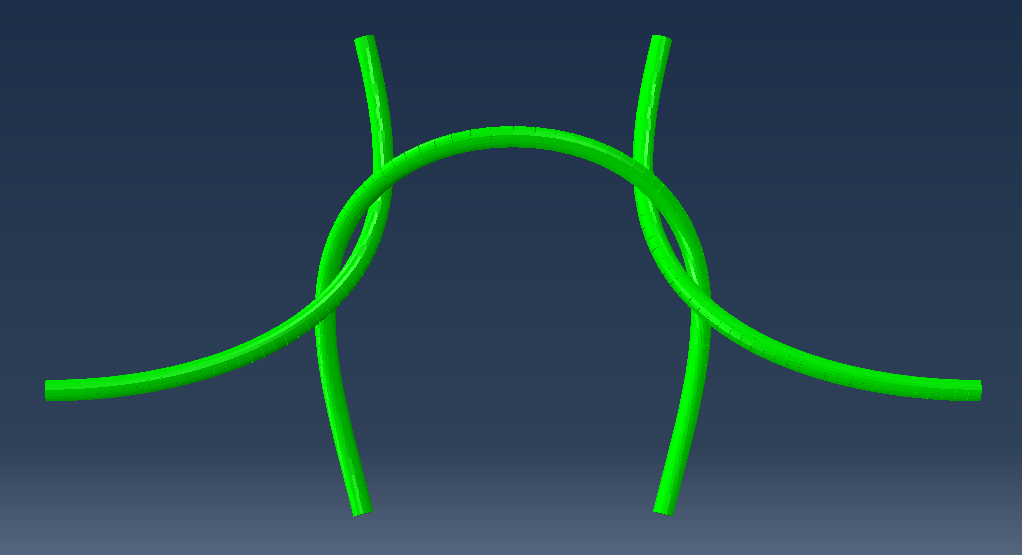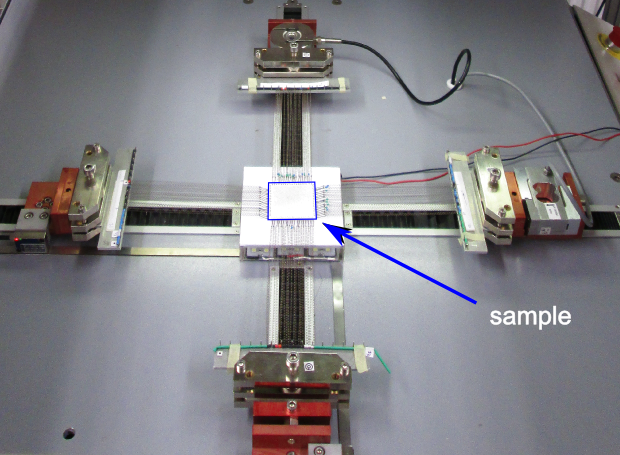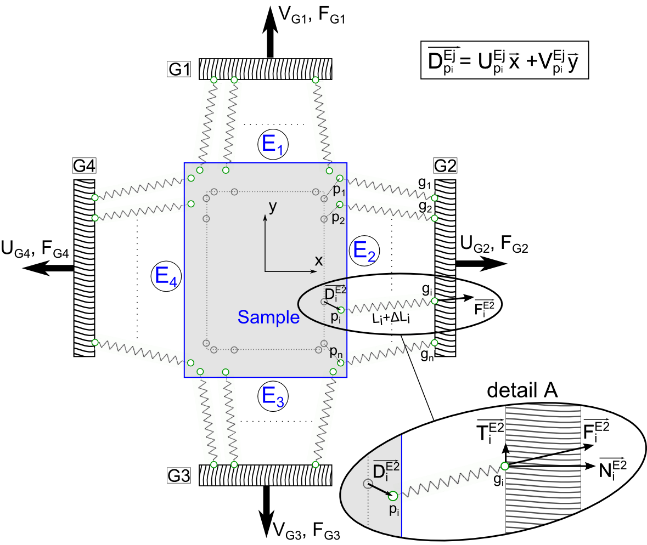Durée: 3 years
Profil recherché : Master degree in mechanics and/or materials sciences
Required skills: Mechanics, material behavior, numerical FE simulations, experimentation, English.
Contacts :
N.Connesson (nathanael.connesson@imag.fr) and D. Favier (denis.favier@imag.fr)
Laboratoire TIMC-IMAG, Université Grenoble Alpes.
Codirection Ludek Heller, Académie des Sciences, Prague
The PhD work will focus on superelastic Nickel-Titane textiles. NiTi shape memory alloys present different mechanical singular particularities as super-elasticity (pseudo-elasticity up to 10%) and shape setting (a NiTi wire set in a specific shape and heated will keep this shape as reference position after cooling).
NiTi knitted textiles present an anisotropic behavior at the end of the manufacturing process (Fig.1 c, blue). If a specific shape setting is applied to NiTi textile, its mechanical behavior is strongly modified (Fig.1 c, red).
The aim of this PhD is to continue the experimental and numerical work initiated in a first PhD to predict the NiTi textiles mechanical behavior depending on different parameters (applied shape setting (knit geometry), NiTi alloy composition and heat treatments) and on the loading configuration (equi-biaxial, biaxial, etc). The idea is to be eventually able to propose specific design so as to obtain a targeted mechanical behavior defined during a companion CIFRE PhD that will simultaneously start at the society Demeure Orthopedie to define new flexible orthoses.
In a first step, the PhD student will learn the different experimental and simulations technics developed during the previous PhD (Fig2 and 3). The student will then analyze experimentally and numerically the impact of different shape setting on the mechanical behavior of NiTi textile. These results will be used in the design of new flexible orthoses.

Figure 1- a) b), c) Knitted NiTi with different initial shape setting; c) mechanical behavior and anisotropy depending on the initial shape shown in a) and b). Superelastic at room temperature, diameter of 0.1mm [Heller2011].

Figure 2- Inner structure geometry in a FE software using symmetry boundary conditions.


Figure 3- Left: setup picture. Right: experimental setup principle. [Tissot2016]
[Heller2011] Heller, L. and Marvalová, B. and Vlach, J. and Janouchová, K. and Syrovátková, M. and Hanuš, J. (2011) Damping Capacity of Superelastic Nickel-Titanium Plain Textiles. Springer Proc. in Phy. 565-572, doi:10.1007/978-94-007-2069-5_76
[Tissot2016] F. Tissot , N. Connesson, L. Heller, Y. Payan, D. Favier, Experimental Setup To Perform Uniform Plane Biaxial Tests On Soft Membranes Including Measurement Of Boundary Load Distribution, (submitted), Experimental Mechanics
Our sites
eServices
 Connexion
Connexion